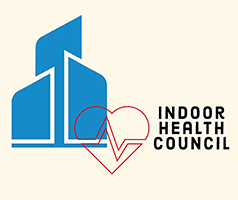The Problem with Green Standard Offerings
One of the problems, maybe the key problem of existing greening standards, is that they do not properly prepare the individual for the significant professional and career growth possible when management and workers understand they are in the healthcare field, not in the stereotypical green-cleaning janitorial business.
That is why the upward mobility project involves people and their role-value first, and the processes involved in their jobs 2nd.
The onboarding and communications process is the first item to get right and cannot wait for a year as some standards suggest. That’s like hiring a doctor to remove your appendix, then finding out he has yet to be trained on the procedure.
When you are hired to clean for health you must be qualified, must pay your dues, and must be rewarded accordingly (e.g., paid for performance) right up front and with opportunity for advancement. Existing hires should be treated as candidates for a new job, and updates and training refreshers must be continual; as in the medical community.
Also, it’s better to forget about getting points—would you want your doctor to be concerned with points rather than your ultimate well-being?—and focus on the main issue, health-focused cleaning; directing energy to one and not two main goals: health or sustainability, not both, or you compromise the program. For example, would you want your doctor to care as much about how he disposes of needles or sharps as in getting you the right vaccine? Which is more important, the environment or your health?
Lastly, the word “dusting” does not occur in either the Healthy Green Schools & Colleges Standard for K-12 School Districts and Higher Education Institutions or in GS-42—omitting a huge area of indoor exposure: airborne dust from poor daily dust-removal practices.
We welcome input on this topic.
Comments from Readers:
You write, “focus on the main issue, health-focused cleaning; directing energy to one and not two main goals: health or sustainability, not both, or you compromise the program.”
We need a reframing here. The question is not whether to choose health over green practices (of course we do!). The better question is how to achieve the health outcomes while also minimizing negative and maximizing positive environmental impacts.
As one very easy example, how much packaging do we really need? Does it really increase safety to wrap every component of a kit individually, place the wrapped components on a foam tray, wrap the entire inner contents, box the wrapped set, and then add another layer of shrinkwrap around the box, stick the box in a case with 11 others, shrinkwrap the case, stack cases on a pallet, and then wrap the pallet? For that matter, could some of the components in that kit be used again? Why do we design so many products to be used once and then thrown away?
– Shel Horowitz, shel@greenandprofitable.com
Sustainability is important, e.g., in farming practices, to support both environmental preservation and long-term health for the individual. Where green practices don’t do that, my guess is those who have green on their salience landscape will want to know about the gap—and will want solutions.
– Comment from a former editor of the Housekeeping Channel
It is important to build on and/or modify existing cleaning practices as we embrace green cleaning. The existence of “greenwashing” suggests a measured approach, the need for an evidence-based path to sustainability, using technology to monitor/verify how green the change is, and how many contaminants remain after the change. Monitoring the effectiveness of the change will help us “clean green” and help protect the health of both people and planet.
– Dr. Jacqui Taylor, jacqui.taylor@flyingbinary.com




